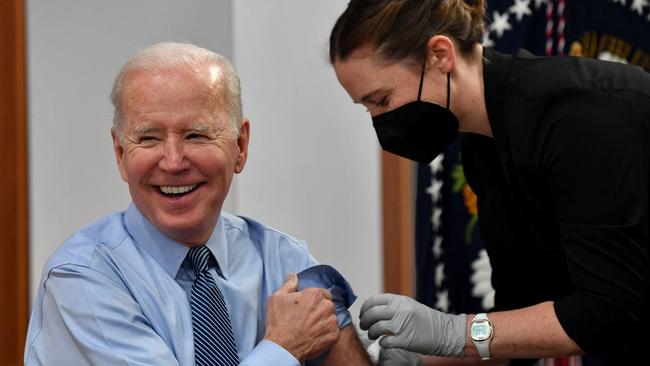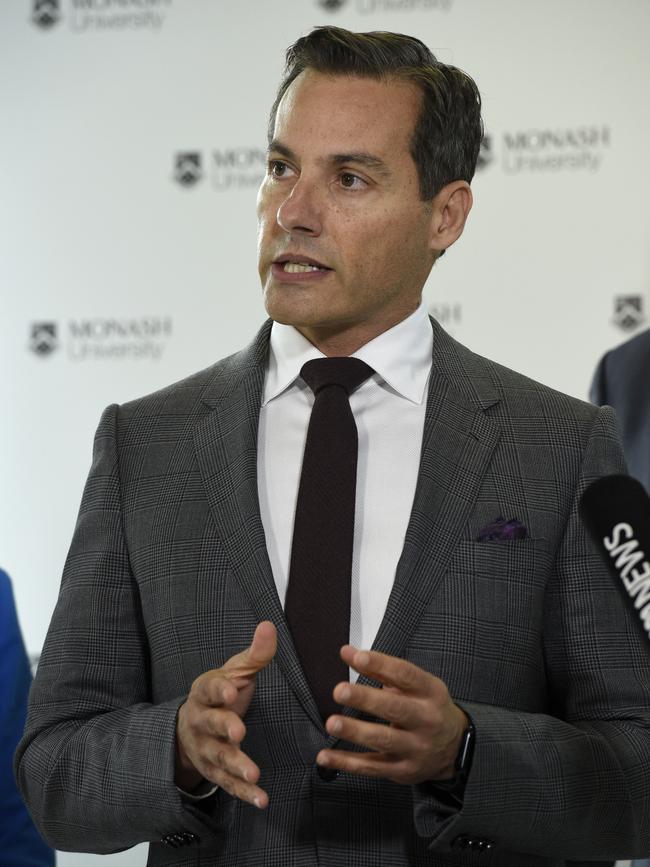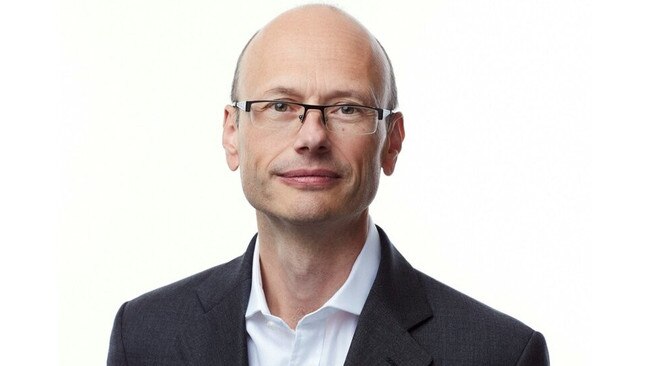How Australia helped Moderna develop a skin cancer vaccine
US biotech giant Moderna is investing $US4.5bn in research and development as it proves it’s more than just a one-product company – Australia is a key part of its plans.

Australia is playing a key role to bolster Moderna’s fortunes as the company faces a profit collapse from a tapering of government-funded Covid-19 vaccinations.
The Boston-based biotech is set to this year post a loss as Covid-19 vaccine sales fall and on rising costs after its profits topped $US20bn ($29.3bn) in the past two years from more than $US37bn in revenue.
But this year, it forecasts revenue to fall as low as $US5bn, while costs will rise to $US6bn. Moderna believes it will be short-term pain for a longer gain.
The bulk of its higher costs stem from lifting its annual research and development budget to $US4.5bn.
To put this in perspective, Australia’s CSL — which has a market value almost twice the size of Moderna — invests about $1bn in R&D each year to fund its pipeline of new drugs.
For Moderna, the spending is critical as its shows that it is more than a one-product company and that its messenger-RNA technology can be used in a wide range of applications beyond Covid-19, including personalised cancer vaccines and jabs for other respiratory viruses such as RSV and influenza.
This is where Australia fits into its plans.

After launching an office in Melbourne last year — in the city’s eastern biotech precinct beside the Synchroton — it has doubled its local workforce and played a key role in developing a melanoma vaccine.
Australia contributed about half the patients in the clinical trials for the vaccine, which the US Food and Drug Administration this week granted Breakthrough Therapy Designation – a process that will expedite the development of the treatment, with full approval potentially months away.
In combination with Merk’s immunotherapy drug Keytruda, Moderna’s vaccine reduced the recurrence of melanoma or death by 44 per cent among patients with advanced-stage cancer.
It is a significant milestone in the company’s R&D pipeline, which includes at least 10 cancer vaccines in human trials, including pancreatic, ovarian and other tumours.
Moderna Australia managing director Michael Azrak said it was such breakthroughs which would not only help strengthen confidence in big pharma but also allow Moderna to diversify beyond Covid-19.
“I get approached by a lot of anti-vaxxers and I was at a function where people were talking about this cancer vaccine – they didn’t know it was the Moderna one – and they were saying how fantastic it was,” Mr Azrak said.

“I interjected and said ‘you realise that basically 90 per cent of that technology is what was in the Covid vaccine. The only thing we change is the encoding of the protein that needs to be created by the body?’
“So there is a lot of work we have to do in terms of education … to really help the broader public, stakeholders, and the scientific community to understand where mRNA medicines can go in the future.”
The future is closer than you think. Moderna’s chief medical officer, Paul Burton, said the company expected to release a single-shot vaccine for Covid-19, influenza and potentially RSV by the middle of this decade.
This was despite its influenza vaccine delivering mixed results in phase 3 clinical trials. While its jab against A strains of the flu generated a strong immune response, it failed to show its shot for B strains was at least as effective as existing approved vaccines.
Further, 70 per cent of trial recipients reported adverse reactions – most of which were mild – versus 48 per cent dosed with a comparator vaccine. The differential is considered too great, according to market insiders. For example CSL’s cell-based influenza vaccine delivered a less than 1 per cent difference in adverse reactions.
But Dr Burton said the development of an mRNA influenza vaccine was an iterative process and the company was able to modify the jab more quickly than conventional shots.
“What we’ve been able to do is tweak the sequencing, or antigen, and go straight back out into clinic and that is a remarkable feature of the mRNA platform. It’s so agile and quick,” he said.
“If you think about doing that in any other platform, you have to retool, make a new antigen. It’s just going to take a long time.
“The vision that we have is by the middle of this decade to bring a combination vaccine together in single shots and I think that will revolutionise health security, public health against respiratory pathogens”.

The global influenza market is set to almost double by 2029, surging from $US7bn to $US13.58bn. Companies have been jostling to capitalise on the growth.
CSL is spending $800m in building a cell-based vaccine factory in Melbourne’s north, replicating a similar facility it has at Holly Springs in the US. Meanwhile, Sanofi has partnered with the Queensland government to build a $280m biomedical research centre focused on developing mRNA vaccines.
Moderna, founded in 2010, is a pioneer of mRNA technology — hence its name, which is a portmanteau of modified RNA. The technology instructs the body’s cells to make a protein that triggers an immune response against Covid-19.
This is different to conventional vaccines, which aim to strengthen a person’s immune system by injecting them with a dead or weakened virus.
It is hoped that by combining multiple respiratory vaccines into a single shot, it will increase adherence by making it easier for people to be immunised against a range of diseases, like the measles, mumps and rubella jab has done for decades.
“If you make it easy for people to get a great vaccine that’s very effective, it’s tolerable, the amount of protection you can give populations is huge,” Dr Burton said.
“RSV at least doesn’t really drift – the antigens stay the same; Covid we’ve done it already and we’re preparing to do it again. We’ll adapt as the virus evolves.
“And flu, certainly, that’s an opportunity to tune it up, get right to the seasonal strains and make it a great vaccine.
“If you can bring them together — I think obliterate is too strong a word – but you could markedly reduce the hospitalisation burden and the death toll that those three viruses bring just by making it simple for people.”




To join the conversation, please log in. Don't have an account? Register
Join the conversation, you are commenting as Logout